

Sections
Highlight

There was a time when if you saw prawn cocktail on the table, served in a glass with its Marie Rose sauce, you knew that something important was cooking. Not to mention fish terrine, bacon-wrapped dates and deviled eggs. They never failed at Christmas, nor at weddings, christenings and other big events. And then there are those dishes that just by mentioning them you had to dress up, such as beef Wellington, sole Meunière or crêpes Suzette.
In the second half of the twentieth century they were the best of the best, but with the passing of time they lost their lustre to the point where they fell into the category of what we nowadays label as old-fashioned food. And not in a derogatory tone. Rather nostalgic. Because many still have that distinguished air of fine, classic cuisine. Not that they are as plentiful as Russian salad, but some strongholds still stand firm. In fact, more than we imagine.
Without going too far, we can order pork Strogonoff at Papulinos (C/ Don Cristian, 41-Malaga) or also with veal at El Trillo (C/ Don Juan Díaz, 4-Malaga), El Botijo (avda. de Los Guindos, 33-Malaga) and Nuevo Lanjarón (C/ Europa, 10-Torremolinos), the latter, by the way, a real paradise for lovers of old fashioned dishes because it also serves prawn cocktail, and... flamenco eggs! That is a juicy relic for its many fans, who nowadays hardly have the opportunity to eat them outside the home. Traditional stuffed pineapple is still prepare at La Montaña (C/ Lope de Rueda, 316).
At BiBo Marbella (Hotel Puente Romano) we can order the sole Meunière and the sirloin Wellington, a dish that is also made to order at Treze (C/ Teatro, 16-Alhaurín el Grande); while at La Langosta (C/ Francisco Cano, 1-Fuengirola) they have lobster thermidor on the menu. The crêpes Suzette at Las Llaves (Avda. de Rota, 4-La Cala de Mijas) are now a permanent fixture on the menu, as is the prawn cocktail, while the soufflé at the Marbella Club or Juanito Juan (Avda. Salvador Allende, 26-Málaga) remain the top of the top.
But there's no need to aim so high: do you remember whisky cake, melon with ham, fruit salad, or baked Alaska? There are so many memories and flavours that come to mind that this report would be endless. But the truth is that all those dishes that we call old-fashioned still have their audience in Malaga province. Judging by what restaurateurs tell us, many of them have not gone out of fashion.
Shrimp or prawn cocktails, fish terrine or deviled eggs come out of the kitchens every day. Some, in an evolved version, such as the Spanish San Jacobo, which in many cases has gone from the original with ham and cheese to incorporate meat. In large restaurants such as Frutos (Avda. la Riviera, 80-Torremolinos) or La Reserva 12 (C/ Bolsa, 12-Malaga) they make it with veal.
Over the years, Spain's traditional 'pyjama' dessert (homemade crème caramel, ice cream, whipped cream and fruit in syrup) has also mutated into combinations where anything goes. At Venta Las Navas (C/ Lope de Rueda, 268-Málaga) they serve one that is as succulent as it is hearty. Although the queen of old-fashioned desserts has to be the Viennetta (known previously in Spain as the Comtessa), which can still be found in the freezers of many beach bars and 'venta' restaurants. It even pops up at haute cuisine restaurants such as Back (C/ Pablo Casals, 8-Marbella), where David Olivas makes his personal version of the classic, in this case with lemon.
As we can see, vintage cuisine is not dead. The proof is on the street. It doesn't matter what type of restaurant. The list is extensive. And, above all, it is in demand. This is shown by journalist Ana Vega Pérez de Arlucea in her book Cocina Viejuna (Larousse), where she highlights these dishes that had their golden age between the 60s and 90s, to the delight of the 'gastronostalgic'. Here we take a look at some examples and where to find them in Malaga province.
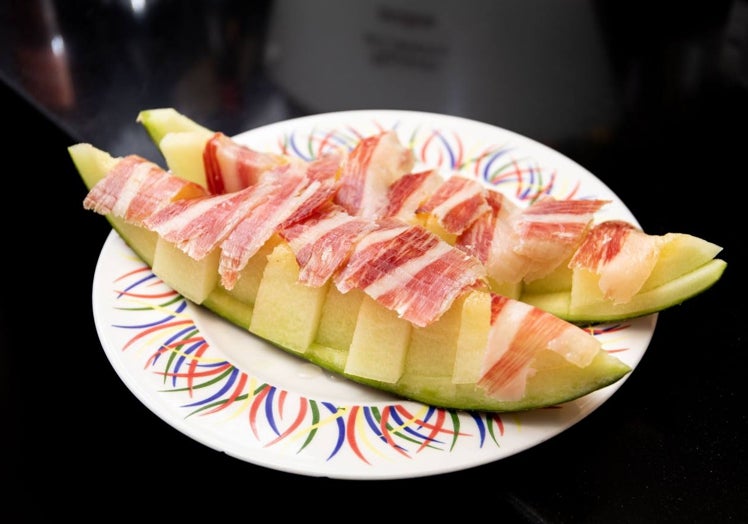
Is it really still on the go? More than a few people will think so. It is not something that abounds in the hotel and catering trade. And even less so in the collective memory when it comes to ordering it. In a world in which the eye (and the taste buds) goes to patatas bravas, tartar, brioche or ceviche, melon with ham may even go unnoticed when you glance at any menu. But it is there. And on more than we think.
It is even reinvented in the form of spherification or croquettes, as in the case of Malaga restaurant Pez Wanda (C/ Granada, 39). Others maintain its essence, such as La Reserva 12 (C/ Bolsa, 12-Malaga), La Reserva del Olivo (Plaza del Carbón, 2-Malaga), the Mesón El Sacristán (Plaza Duquesa de Parcent, 14-Ronda), El Trillo (C/ Don Juan Díaz, 4-Malaga) or La Montaña (C/ Lope de Rueda, 316-Puerto de la Torre, Malaga), where it is also served with prawns and in the melon itself with a revival touch.
However, if we go back to the Middle Ages, the combination has its origins in a medical recommendation: to eat melon at the beginning of meals or mixed with other ingredients such as ham. From the 19th century onwards, it was considered a delicacy worthy of the most elegant banquets. And it remained so until the 1970s and 1980s. Its peak.
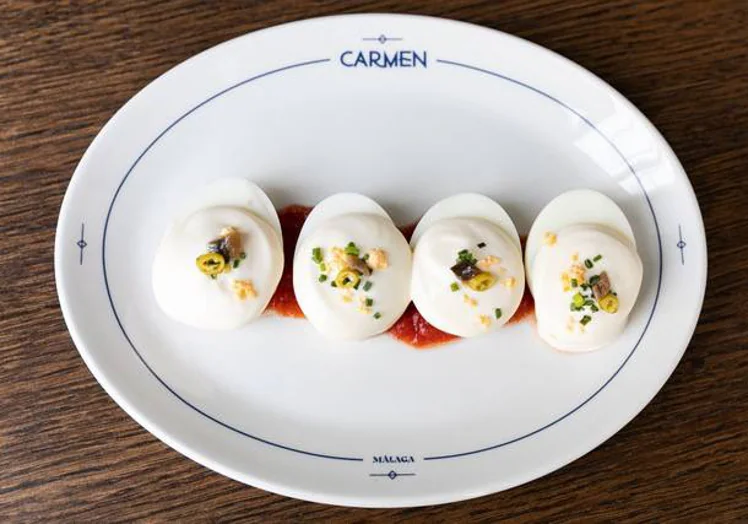
Who doesn't still eat deviled (stuffed) eggs at home, or at a friend's or relative's? Some even go to great lengths to garnish them with peppers or hard-boiled egg yolk. Simple, but chic at the time. Then as now, they are usually stuffed with tuna and tomato and covered with mayonnaise. Although they were originally spiced, as was the custom in medieval Islamic cuisine.
And they have their own history. The recipe dates back to the 13th century, and in the Golden Age we can find Diego Granado's version, with sultanas, pepper, cinnamon, orange juice, mint and marjoram. Meanwhile, Felipe III's chef, Francisco Martínez Motiño, stuffed them with cheese and breadcrumbs and then fried them. Nowadays, it is more common to see them on tables at home than in restaurants. However cold tapas trays on bars would always have them alongside the famous Russian salads, boquerones en vinagre (anchovies in vinegar) or salpicón de marisco (seafood salad).
Some of them continue to do so. From essential tapas bars such as Bar Salamanca (C/ Tirso de Molina, 9-Malaga), La Caverna (C/ Tomás Echeverría, 21-Malaga) or Bar Baresi (C/ Pinzón, 8-Malaga) to the five-star hotel Only You (Alameda Principal, 1-Malaga), which offers them on the menu of its tavern Carmen. In this case, with an oriental touch: dashinomoto, a base of kimchi, ketchup and Japanese mayonnaise to accompany the eggs and tuna, and egg yolk, anchovy and Korean spring onion on top.
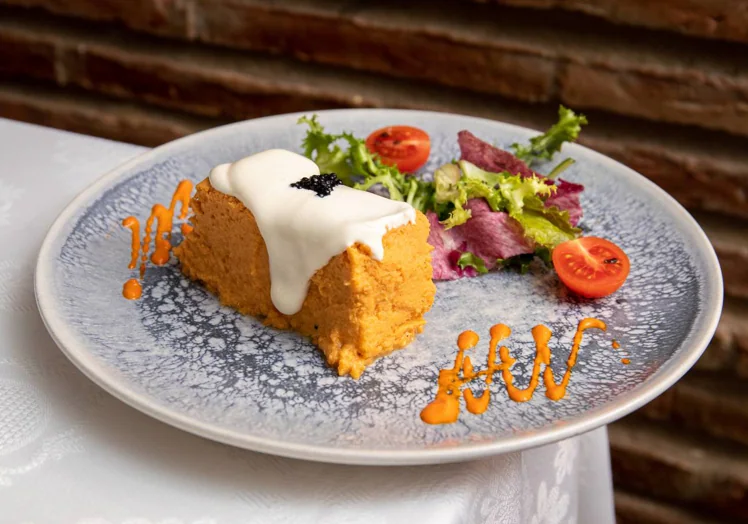
One of those starters without great difficulty, but which gave a stately touch to any celebration. A kind of pudding that has become less and less prominent over the years (especially in the south of Spain) despite being an ideal recipe to look good at a gathering for family or friends. That's at home. Outside, it is not very common in restaurants either.
And it has its unconditional fans. Just ask at Mesón Astorga (C/ Gerona, 11), where, along with onion tart with ham or the aubergines, it is a dish they wouldn't dream of removing from the menu. Their faithful regulars wouldn't let them. In their case, they make it with monkfish. Although the dish that makes the fish terrine famous is scorpion fish, which is, for example, on the menus of Refectorium Catedral (C/ Postigo de los Abades, 4) or Candamil (C/ Cuarteles, 4-Malaga).
It is worth remembering that this fame comes from none other than the three Michelin-starred Arzak, who really made it popular in the 1970s. So much so that it even surpassed the original, a recipe published in the 1930s in La Cocina Completa by the gastronome María Mesteyer, known as the Marquise de Parabere.

It sounds a bit like a joke, but it's a good one. Battered prawns in Spain were known as 'gambas con gabardina'. The trench coat gave them an air of sophistication. Today it is difficult to find them called that on restaurant menus. But this is not a dish that has disappeared. No. They are still there. But now they're called 'gambas rebozadas'. Believe it or not, they were born in bourgeois cuisine. There is evidence of them French gastronomy at the end of the 19th century. It was around the 1950s that fish such as cod began to be 'dressed' in trench coats.
Madrid led the way in changing the original batter with stiff egg whites for the carbonic gas of beer or a siphon. Another way to fluff up the batter. That is, of course, if it's homemade. Because the proliferation of frozen prawns made it lose the status it once had as one of the great exponents of modern tapas.
There are still a few good prawns in their trench coats in this area. Some of the most acclaimed in Malaga city are those of Los Marfiles (Avenida de la Aurora, 59-Malaga), which are homemade. Although we must not miss those at El Parador Playa (Ctra. Cádiz, 131-Benalmádena), here as 'gabardina inversa de gamba blanca' (served with the head).
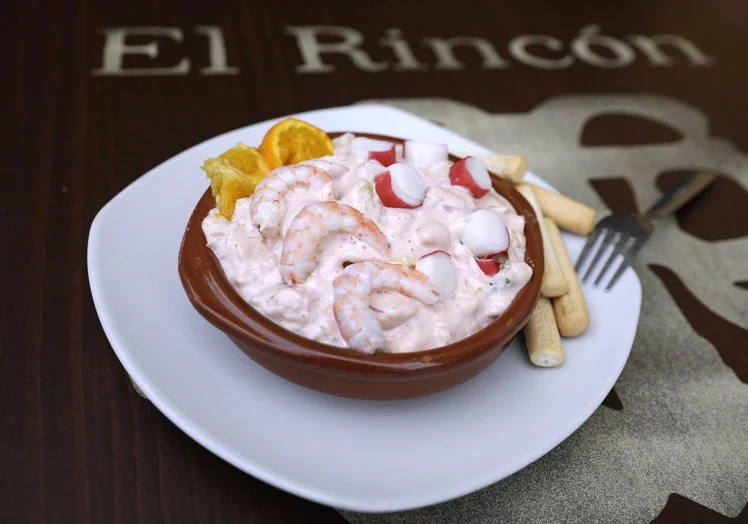
It was the best of the best in its day. And for quite a few years. There was no celebration, event or Christmas when the prawn cocktail was not there, with its Marie Rose sauce and lettuce in that double-glazed glass. It was synonymous with a big day, a party. Omnipresent, both at family gatherings and in restaurants, this dish has its origins in 19th-century California and its nouveau riche, sponsored by the gold rush.
This is where cocktail sauce was born. It would later take shape in Las Vegas and, at the turn of the century, reach Europe, where Marie Rose sauce was added. Little by little it took off and by the 1960s it was already one of the kings of cuisine. And even more so between the seventies and eighties, when ingredients that were considered innovative at the time, such as avocado and pineapple, were added.
Well, don't go away yet, it's not extinct. In Malaga we can still count on the fingers of more than two hands places where the famous prawn cocktail is still hiding. One of the most successful in Malaga city is El Rincón de Joaquín (C/ Quasimodo, 16-Malaga), where it is served daily. Other examples are La Venta Platero (Carretera Coín-Cártama, km 3.5-Coín), La Reserva de Antonio (Plaza del Remo, 6-Torremolinos), Eclipse (Avda. de Andalucía, 189, Vélez-Málaga) or Las Llaves (Avda. De Rota, 4- La Cala de Mijas). Of course, there would be many more if we accept avocado with prawns/shrimps and Marie Rose sauce/mayonnaise as a cocktail.
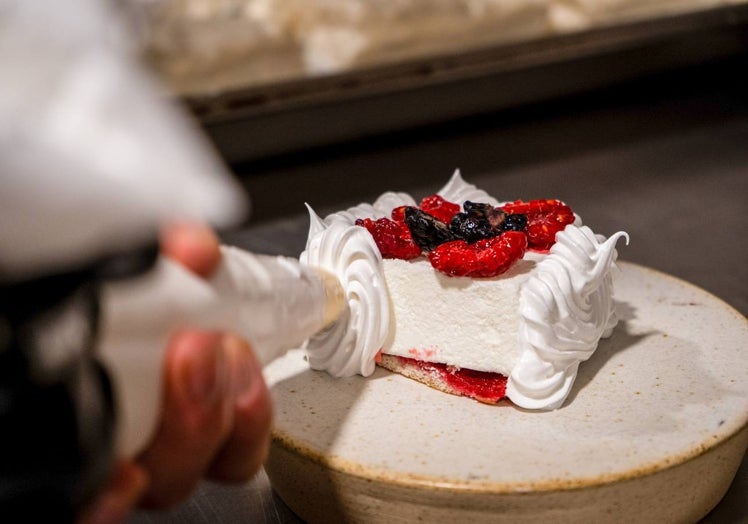
This is one of the most spectacular desserts in living memory from the golden age of the last part of the 20th century. The contrast of textures and temperatures of the sponge cake, the fruit and the ice cream covered in meringue and baked (without melting) was a delight in itself. If we added the preparation at the table with the flambéed liqueur, it became a spectacle.
The dessert was an example of avant-garde cuisine created by French chef Charles Ranhofer to commemorate the annexation of Alaska to the United States in 1867. At a time when brownies, tiramisu, chocolate cakes and cheesecakes are repeated ad nauseam, the baked Alaska is a needle in a haystack.
"It is a dessert that is already very difficult to find, which is why, together with the vanilla soufflé, it is the most popular of our desserts," said Carlos García Mayoralas, one of the pillars of the Areia restaurant (C/ Ramón Gómez de la Serna, 23-Marbella). There they offer a raspberry version with yoghurt, meringue and flambéed with rum.
A luxury that can also be enjoyed at El Mirlo Blanco (C/ Cuesta de la Villa, 2-Mijas); or at La Taberna de Mike Palmer (Club Hípico El Pinar, Camino de los Almendrales, s/n), with homemade almond sponge cake, orange ice cream, Swiss meringue and washed down with orange liqueur. It is not an easy recipe. Perhaps that is a handicap in the kitchen. But this vintage touch of such a high level is appreciated at the table.

A childhood memory for many in Spain is of the adults at the table after a meal in Spain asking for a splash of whisky over their slice of whisky cake. A dessert that was forbidden for the minors in the room. That was another era - culinary nostalgia for the 80s/90s when whisky cake was the most popular dessert. Today it is generally associated with industrial ice cream, but it was actually cake before ice cream. And it may well have its origins in Malaga. The story goes that Stanislaus I Leszczynski, King of Poland in the 18th century, liked to soak his cakes in Malaga wine, which created a trend among confectioners.
The idea of soaking cake in an alcoholic drink was interpreted differently depending on the country. In France, for example, it gave rise to the rum baba, and in Catalonia, to the 'borracho con crema quemada'. There is speculation that some versions, perhaps in Ireland or Scotland, could be the origin of this whisky cake, which began as a cake and then became popular in ice cream form until it gradually lost its prominence.
Not surprisingly, some ice cream brands continue to make it and supply supermarkets and many restaurants, such as the popular Papulinos (C/ Malasaña, 42-C/ Don Cristian, 41-C/ Correo de Andalucía, s/n-Malaga). Although where it is most abundant is in roadside ventas and chiringuitos (beach bars). We can even enjoy it as one of the flavours to choose from in ice cream parlours such as Frágola (C/ Jerez Perchet, 14-Malaga).
Nor can we forget a chef who has returned the whisky cake to its pedestal: Miguel Palma, who includes it in his menu at La Taberna de Mike Palmer with a version he prepares with whipped cream with whisky and sponge cake soaked in the spirit, to which caramelised egg yolk is added at the table and flambéed with Dyc. It couldn't be more authentic.

Eating pyjamas might sound strange, but there was no doubt that it was the most eagerly awaited end to any lunch or dinner. Especially since chefs started to go all out and made it more and more appealing by adding exotic ingredients, from pineapple to chocolate syrup and, of course, lots of cream. Some have even topped it with paper umbrellas and sparklers.
The dessert now has its place on the menus of many restaurants... and in the orders of many customers. This is confirmed at El Boticario: "It seems to be coming back into fashion, it is in demand quite a lot." At the famous Venta Los Montes in Malaga, they prepare it true to the original: crème caramel, ice cream, fruit and cream. As in Venta Talillas (Avenida Antoñico Rosa, s/n-Villanueva del Trabuco), which has made the pyjama one of its star desserts. It includes crème caramel, curd, pineapple, peach in syrup, Viennetta, 'grandmother's cake' and cream (plenty of it).
Other versions go even further by incorporating wafers, cherries or profiteroles. From there, many reinterpretations have been seen under the name of 'special assortment', a mix of various desserts from the menu of the restaurant in question. A worthy descendant of the genuine 'pyjamas' that were born in Barcelona in the 1950s. And is was all because of some soldiers from the US Navy who asked for 'peach melba' (vanilla ice cream, peach and raspberry coulis) at the legendary 7 Portes restaurant. They didn't have any, but they made their own version with peach in syrup, ice cream, crème caramel and cream. The phonetic adaptation of peach melba gave rise to the term 'pijama'. It is still on the menu today.
Publicidad
Publicidad
Publicidad
Publicidad
Esta funcionalidad es exclusiva para registrados.
Reporta un error en esta noticia

Debido a un error no hemos podido dar de alta tu suscripción.
Por favor, ponte en contacto con Atención al Cliente.

¡Bienvenido a SURINENGLISH!

Tu suscripción con Google se ha realizado correctamente, pero ya tenías otra suscripción activa en SURINENGLISH.
Déjanos tus datos y nos pondremos en contacto contigo para analizar tu caso

¡Tu suscripción con Google se ha realizado correctamente!
La compra se ha asociado al siguiente email
Comentar es una ventaja exclusiva para registrados
¿Ya eres registrado?
Inicia sesiónNecesitas ser suscriptor para poder votar.